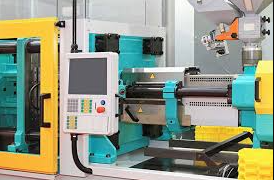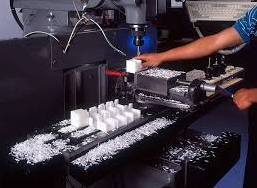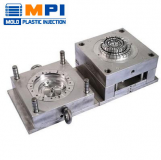The process of molding plastic materials into different shapes is known as plastic molding and is a common manufacturing technique. It is a flexible and economical technique that has transformed the manufacturing of plastic goods in a variety of sectors. We shall go into great length about the plastic molding process in this post, including its different methods, benefits, uses, and other topics.
Introduction to Plastic Moulding
Plastic materials are shaped using a mold or a die during the plastic molding manufacturing process. The method enables precise construction of delicate and complex shapes. Due to its adaptability, efficiency, and capacity for producing large quantities of goods, it has grown to be a crucial component of modern production.

Types of Plastic Moulding Processes
Injection Moulding
The most used method of plastic molding is injection molding. Under intense pressure, molten plastic material is injected into a mold cavity. As it cools and hardens, the substance adopts the contours of the mold cavity. A vast range of goods, from small components to massive car parts, can be produced by injection molding.
Blow Moulding
Bottles and other hollow plastic containers are typically made using blow molding. Inflating a heated plastic tube or preform inside a mould cavity causes the plastic to take on the required shape during the procedure. The effectiveness of blow molding in creating strong, lightweight plastic containers is well established.
Compression Moulding
Heat and pressure are combined in the compression moulding process to shape plastic materials into the required shape. It involves packing a precise amount of plastic into the cavity of a heated mold. The final product is created when the plastic has had time to cure and solidify. Products with fine features and high strength are frequently made using compression molding.
Rotational Moulding
Rotomoulding, another name for rotational molding, is a process used to make massive, hollow plastic items. A heated mold that is filled with plastic powder or liquid resin is rotated during the procedure. The rotation makes sure that the mold has a homogeneous coating, giving it a uniform thickness and strength. Manufacturing water tanks, playground equipment, and storage containers all frequently use rotational molding.
Thermoforming
A thermoplastic sheet is heated and shaped using a mold in the process known as thermoforming. The desired shape is made by stretching the hot sheet over the mold. The plastic keeps its established shape after cooling. Manufacturing processes like thermoforming are frequently used to create items like packing trays, single-use cups, and interior parts for automobiles.
Extrusion Moulding
Plastic items with a uniform cross-sectional profile are produced continuously through the extrusion moulding method. The final shape of the product is determined by pushing molten plastic through a die. After cooling, the extruded plastic is trimmed to the required length. This method is frequently used to make plastic film sheets, pipes, and tubes.
Transfer Moulding
Transfer molding is an injection molding variant that incorporates aspects of compression molding. It entails melting the plastic substance in a different chamber before putting it into the cavity of the mold. Under pressure, the molten plastic fills the cavity and takes on the desired shape. When making products with complicated designs or when working with materials that need to be heated, transfer moulding is frequently employed.
Key Steps in the Plastic Moulding Process
Mould Design and Creation
The design and construction of the mold is the initial step in the plastic molding procedure. This entails giving careful consideration to the shape, size, and material characteristics of the desired product. In order to maintain accuracy, metals like steel or aluminum are frequently used to create molds.
Material Selection and Preparation
For the finished product to have the appropriate attributes and characteristics, the right plastic material must be chosen. It is necessary to take into account aspects like strength, flexibility, heat resistance, and cost. The chosen plastic material is then made ready for molding by being granulated or melted into the proper consistency.
Melting and Injection
When melting thermosetting plastics, frictional heating is used, otherwise heating devices are used to melt the prepared plastic substance. The plastic is pumped into the mold cavity at a high pressure after it is melted. This makes sure the molten substance fills the space completely and assumes the proper shape.
Cooling and Solidification
The molten plastic is injected into the cavity of the mold and then allowed to cool and solidify. Utilizing cooling systems or submerging the mold in water or other coolants helps speed up cooling. The material can harden and hold its shape during cooling.
Ejection and Finishing
When the plastic has cooled and solidified to the proper degree, the mould is opened, and the final item is evacuated. To attain the desired aesthetics and usefulness of the product, extra actions like trimming, polishing, or surface treatment may occasionally be needed.

Advantages of Plastic Moulding
Plastic moulding offers numerous advantages that have contributed to its widespread adoption in various industries. Some of the key advantages include:
Versatility: With conventional production processes, it would be challenging or expensive to create complicated shapes and intricate designs.
Cost-effectiveness: It is economically feasible for mass production thanks to the moulding technique, which enables high-volume production while lowering per-unit costs.
Material options: The availability of a large variety of plastic materials, each with distinct qualities, enables manufacturers to choose the best material for their individual applications.
Rapid prototyping: Plastic molding makes it possible to produce prototypes quickly, accelerating the time to market and allowing for iterative design improvements..
Durability and strength: Products made of plastic that have been molded can have high strength and durability, making them appropriate for a variety of applications.
Customization:By adding logos, textures, or precise color needs, plastic moulding makes it simple to customize products.
Reduced waste: Because extra plastic may frequently be recycled and used again in subsequent manufacturing cycles, the plastic molding process produces very little waste.
Consistency and repeatability: Utilizing moulds improves homogeneity across large production batches while ensuring constant product quality and dimensions.

